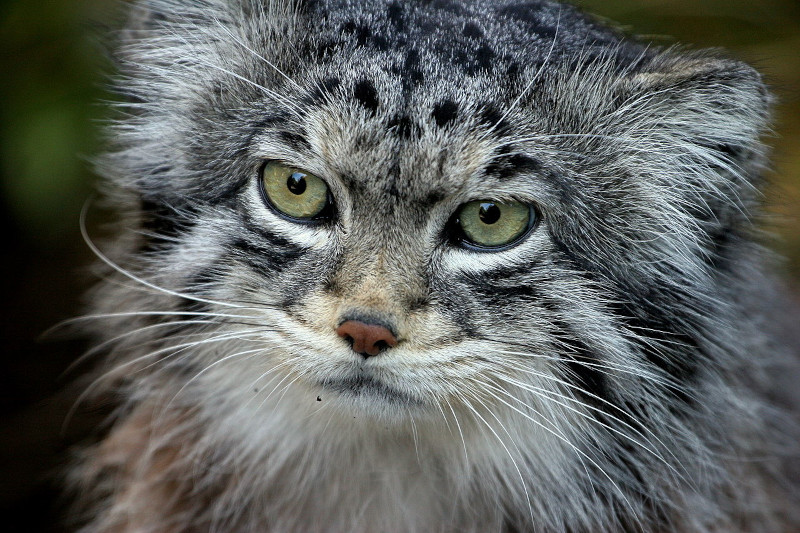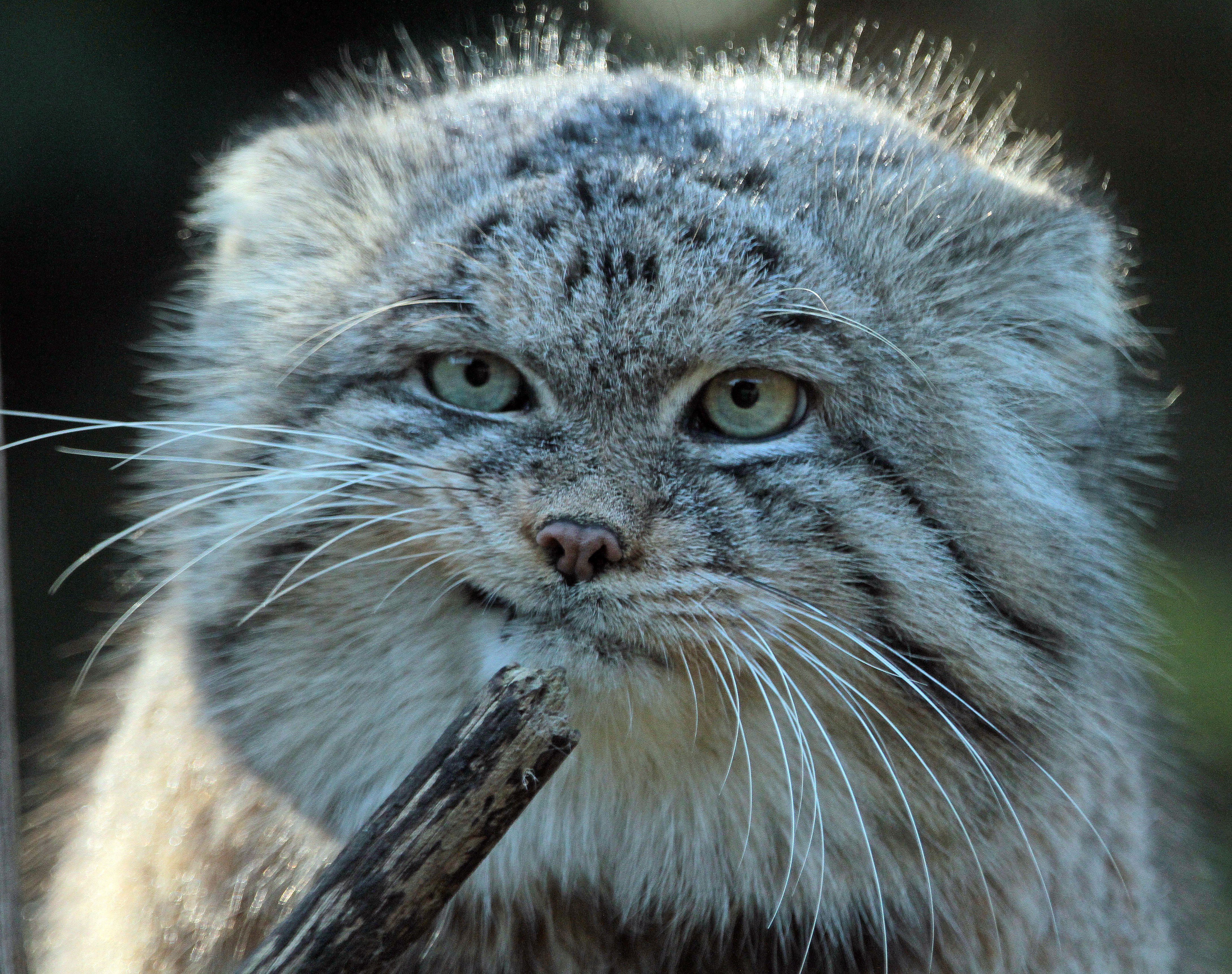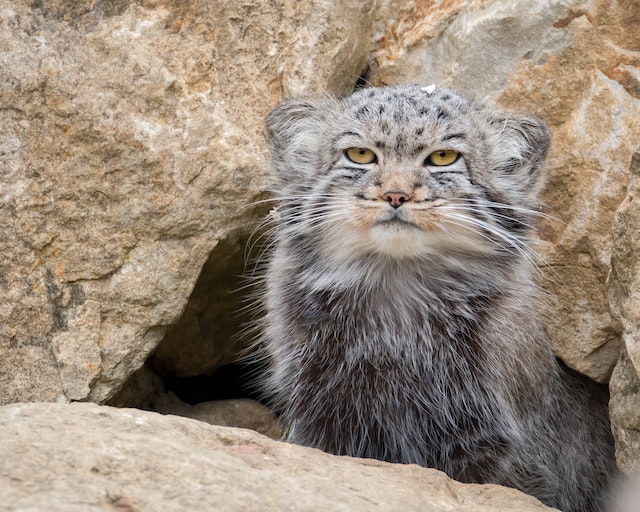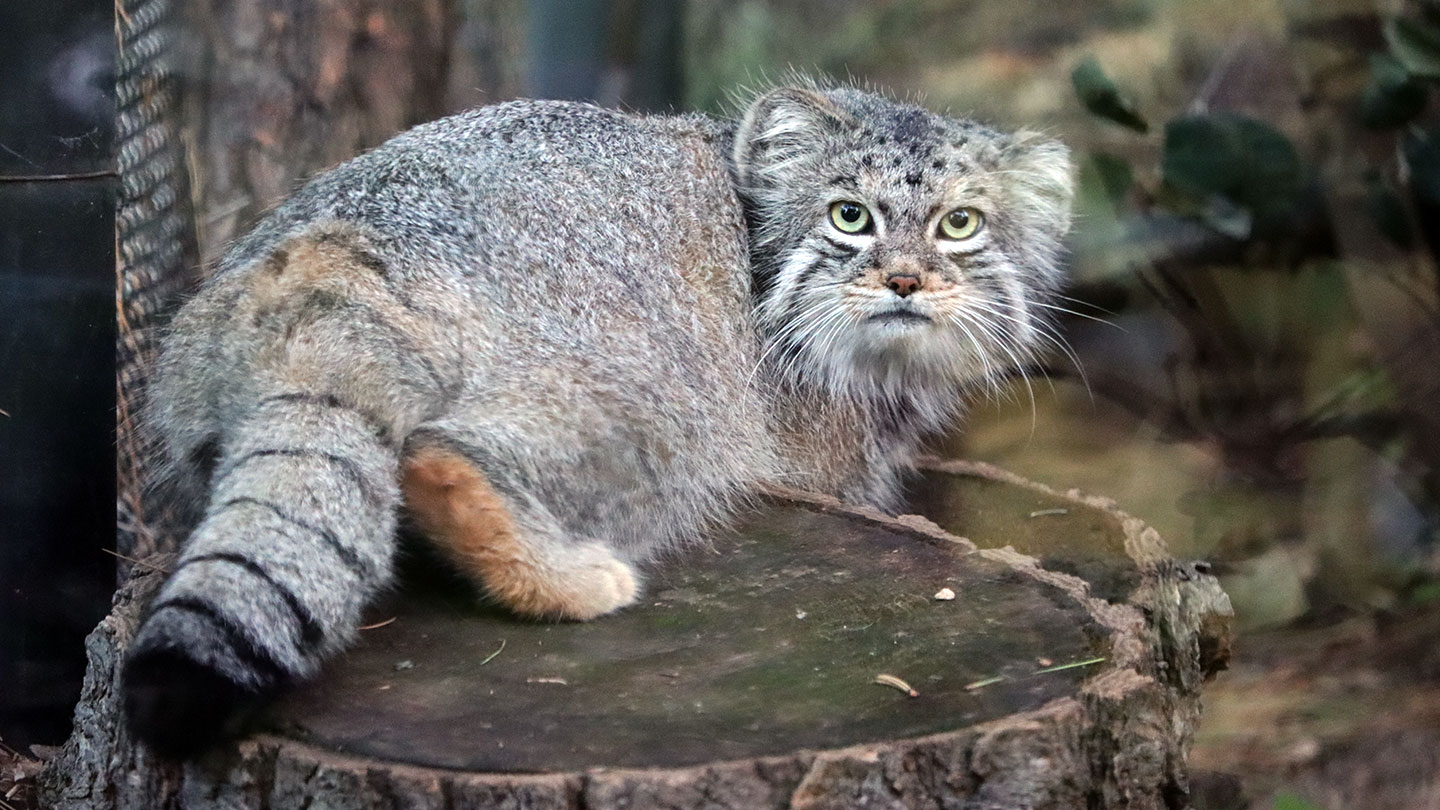The Ultimate Guide to the Pallas Cat Bone & Yarn
:max_bytes(150000):strip_icc()/__opt__aboutcom__coeus__resources__content_migration__mnn__images__2015__09__11174630606_7f353a58b8_k-1e5af8dc6a9d45ee871785699a2410ae.jpg)
Why Is the Face of the Pallas' Cat So Expressive?
The Cotswold Wildlife Park's breeding pair of majestic Pallas's Cats, Tull and Penelope, have produced their first litter at the Park. Their as-yet-unnamed and unsexed kittens (pictured above) are the first Pallas's Cats to be born at Cotswold Wildlife Park since the species arrived at the collection back in 2010.

Pallas Cat Otocolobus Manual. Manul Lebt Im Grasland Und in Den Montansteppen Zentralasiens
1. The Pallas' cat also goes by the name manul. German naturalist Peter Pallas originally classified the cat as Felis manul in 1776. The word 'manul' has its roots in the Mongolian language.

Pallas Cat l Exquisite Wild Feline Our Breathing
The Pallas's cat (Otocolobus manul), also known as the manul, is a small wild cat with long and dense light grey fur, and rounded ears set low on the sides of the head. Its head-and-body length ranges from 46 to 65 cm (18 to 26 in) with a 21 to 31 cm (8.3 to 12.2 in) long bushy tail. It is well camouflaged and adapted to the cold continental climate in its native range, which receives little.

The Ultimate Guide to the Pallas Cat Bone & Yarn
The Pallas cat, also known as the Manul, is a small wildcat native to the remote mountainous regions of Central Asia, including Mongolia, Kazakhstan, and parts of Russia and China. Known for its distinctive appearance with a stocky build, dense fur, and expressive round face, the Pallas cat is a true gem for wildlife photographers. Its elusive.

Pallaskatze oder Manul Pallas katze, Wilde katzen, Katzen
In 2016, the Pallas's cat International Conservation Alliance (PICA) was founded which aims to increase the amount of research done on Pallas's cats. "[2981] Pallas' cat" by zoofanatic is licensed under CC BY 2.0. Threats in the Wild. Pallas's cat populations are affected by anthropogenic activity, including [5]:

Pin on Manul Pallas's Cat
Of the 41 cat species 34 are considered "small cats", many of which are threatened and lacking in knowledge and conservation action - the Pallas's cat is no exception.In order to improve our understanding of the species and at the same time enhance the global conservation efforts, the Pallas's cat International Conservation Alliance (PICA) was established.

Let’s go see Pallas’ Cat! International House Medium
Aussehen: Wie groß werden Pallas-Katzen? Der Manul (Otocolobus manul, Synonym: Felis manul) stellt innerhalb der Familie der Katzen eine eigene Art dar. Die Tiere werden auch Pallas-Katzen genannt - nach ihrem Entdecker, dem preußischen Naturforscher Peter Simon Pallas. Dieser hatte im Jahr 1776 die wilde Katzenart erstmals beschrieben.

Pallas Kat Als Huisdier Vogels
Furry, funny and fascinating, the Pallas's cat (Otocolobus manul) is perhaps one of the most expressive felines in the world.Also known as the manul cat, these fluffy felines get their star quality from their repertoire of quirky facial expressions.Pallas's cats are found throughout Central Asia, with the largest populations thought to be in Mongolia and Russia, where they've long held a level.
:max_bytes(150000):strip_icc()/__opt__aboutcom__coeus__resources__content_migration__mnn__images__2015__09__11724185476_a1a6c1c2f7_k-6470f0c31d6941fb854f97acc903a421.jpg)
Why Is the Face of the Pallas' Cat So Expressive?
The Pallas's cat (Otocolobus manul) is a small wild cat well camouflaged and adapted to the cold continental climate in its native range. It has rounded rather than vertical slit pupils, a unique feature among small cats. It inhabits rocky montane grasslands and shrublands, where the snow cover is below 15-20 cm (6-8 in) and preys foremost on lagomorphs and rodents.
:max_bytes(150000):strip_icc()/__opt__aboutcom__coeus__resources__content_migration__mnn__images__2015__09__13901304865_a444cf4d34_k-9ef3e498413b49a8ad79f984d4770b21.jpg)
Why Is the Face of the Pallas' Cat So Expressive?
First recorded by German naturalist Peter Pallas in 1776, the Pallas's cat (also known as manul) is a wildcat known for its unique appearance. Roughly 15,000 adult Pallas's cats live in the wild.

One of our Pallas cats. Manul cat, Pallas's cat, Small wild cats
The Pallas Cat, a true marvel of nature, requires our immediate attention and protection. Through the power of eco-tourism and by supporting organizations like Big Cat Rescue, we can ensure the survival of these captivating felines for generations to come. Let us embrace responsible travel practices, engage with local communities, and.

Where Do Pallas Cats Live Domestic or Wild? PD Insurance NZ
The Pallas's cat International Conservation Alliance (PICA) educates local people about the manul and the threat posed by humans. PICA is the only conservation project in the world that is dedicated to this species. Field research plays an important role in gathering new knowledge. A recent study into the increase of domestic dogs in manul.

Pallas Cat Discovers Camera Outside Its Den and Decides to Check it Out Love Meow
The Pallas's cat is one of the smallest cat species found in the wild. Gage Beasley's In-Demand Plush Toys Also known as manul or steppe cat, this cat species is native to Central Asia and is fully adapted to life in the cold, harsh steppe grasslands of Mongolia, China, Tibet, Iran, and 16 countries across the Asian continent.

Why The Pallas' Cat Should Your New Favorite Animal Pallas's cat, Cats, Animals
Pallas's cats live in areas ranging from Pakistan and northern India to central China, Mongolia, and southern Russia. According to Wild Cats of the World by Luke Hunter, its body isn't adapted.

Pallas Cat Kittens For Sale My Blog My Best Cat Blog
Pallas cat. The Pallas's cat (Otocolobus manul) is a small feline that lives among the mountains and grasslands of Central Asia.The species has a large distribution area that includes 16 countries and extends from Iran in the west to China and Mongolia in the east, but its actual occurrence in the distribution area is largely unknown.

Featured Animals Pallas' Cat CMZoo
The Pallas' Cat has long been hunted for its fur in relatively large numbers in China, Mongolia and Russia. There are approximately 50 Pallas' Cats in U.S. Zoos and wild populations are decreasing. Pallas' Cats are not easy to breed in captivity and keeping Pallas' Cats healthy in captivity is difficult. Survival rates are low due to.